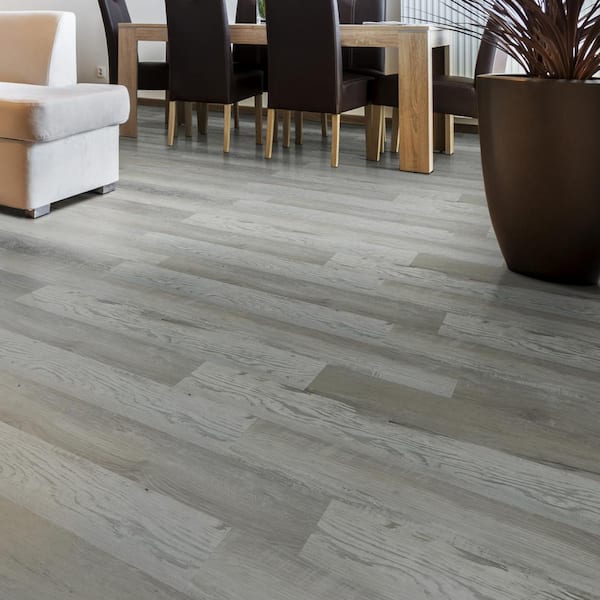Choosing the right flooring for your bedroom can make a huge difference in creating a comfortable and relaxing space. After all, your bedroom should be a sanctuary where you can unwind and get a good night’s sleep. So, what should you choose when it comes to bedroom flooring?
There are several factors to consider when deciding on bedroom flooring. One of the main considerations is comfort. You want something soft and cozy underfoot, especially when you first step out of bed in the morning. For this reason, carpeting is a popular choice for bedrooms. It provides a warm and plush feel, making your bedroom feel inviting and comfortable. However, if you have allergies or prefer a different look, hard-surface flooring such as hardwood or laminate can be a great option. You can always add area rugs to provide additional comfort and help reduce noise.
To learn more about the different flooring options for bedrooms and what might suit your needs and style best, continue reading the article. Whether you prefer the softness of carpet or the elegance of hardwood, you’ll find plenty of ideas and insights to help you make an informed decision. So, let’s dive in and explore the world of bedroom flooring together! When it comes to choosing the right flooring for your bedroom, there are several factors to consider. You want a flooring option that not only looks great but also provides comfort and durability. In this article, we’ll explore different types of bedroom flooring and help you make an informed decision.
Carpeting is a popular choice for bedrooms as it provides a soft and cozy feel underfoot. There is nothing quite like stepping out of bed onto a plush, carpeted floor. It adds warmth and insulation to the room, making it a perfect choice for colder climates. Additionally, carpeting helps reduce noise by absorbing sound, making it an excellent option for bedrooms located on upper floors or in shared living spaces.
However, it’s important to note that carpeting may require more maintenance compared to other flooring options. It can accumulate dust and allergens and may need regular vacuuming or professional cleaning to keep it looking fresh and free from allergens. If you or someone in your household suffers from allergies, it may be worth considering alternative flooring options.
If you prefer the look of hard-surface flooring but still want the comfort of carpeting, you can opt for hardwood or laminate flooring with area rugs. Hardwood floors are known for their timeless beauty and elegance. They lend a sophisticated look to any bedroom and can complement a variety of interior design styles. Laminate flooring, on the other hand, is a more budget-friendly option that can closely mimic the appearance of real wood.
By adding area rugs to hardwood or laminate floors, you can achieve the desired warmth and comfort. Rugs also provide a way to add pops of color and texture to your bedroom, allowing you to change the look and feel of the space without the need for a complete flooring overhaul.
When it comes to the bathroom, the flooring requirements are different from those of the bedroom. The bathroom is a high-moisture environment, so it’s essential to choose flooring that can withstand water and humidity. Fortunately, there are several options available that combine water resistance with style.
Ceramic or porcelain tiles are popular choices for bathroom flooring. They are durable, water-resistant, and easy to clean. With a wide range of colors and patterns available, they can complement any bathroom decor. Additionally, tiles provide a clean and hygienic surface that is resistant to stains, odors, and bacteria growth.
Natural stone tiles, such as slate or marble, can also be used in bathrooms to create a luxurious and spa-like atmosphere. However, it’s important to note that natural stone requires regular sealing to maintain its durability and appearance. If you’re willing to put in the extra maintenance, natural stone can be an excellent choice for creating a stunning bathroom space.
Luxury vinyl tiles (LVT) are another option to consider for bathroom flooring. LVT offers the look of natural materials like wood or stone but with added water resistance and durability. It’s a cost-effective solution that can handle the moisture and humidity present in bathroom environments.
For those looking for a more eco-friendly option, cork flooring is worth considering. Cork is a renewable and sustainable material that is naturally resistant to mold, mildew, and water damage. It provides a cushioned feel underfoot and has thermal insulation properties, making it a comfortable choice for bathroom flooring.
In conclusion, when choosing bedroom flooring, it’s essential to consider factors such as comfort, durability, and maintenance requirements. Carpeting provides a cozy feel but may require regular cleaning. Hard-surface flooring with area rugs offers a stylish alternative while still providing comfort. In the bathroom, water resistance is crucial, and options like ceramic tiles, natural stone tiles, luxury vinyl tiles, and cork flooring can all meet this requirement. Take the time to assess your specific needs and preferences to find the perfect flooring option for your bedroom.
